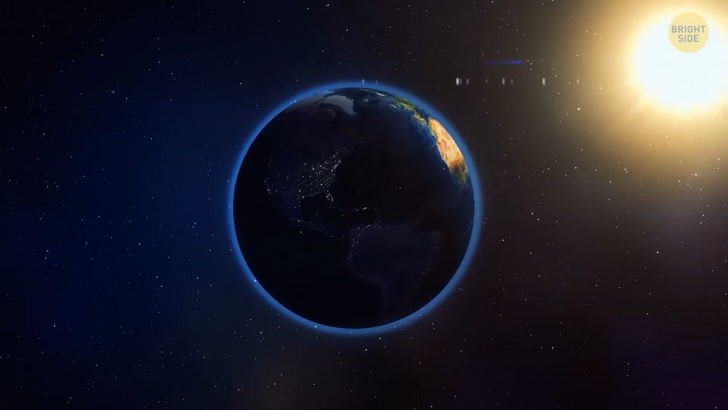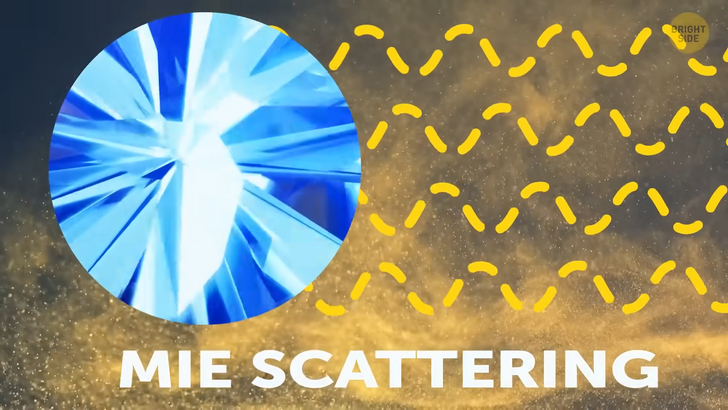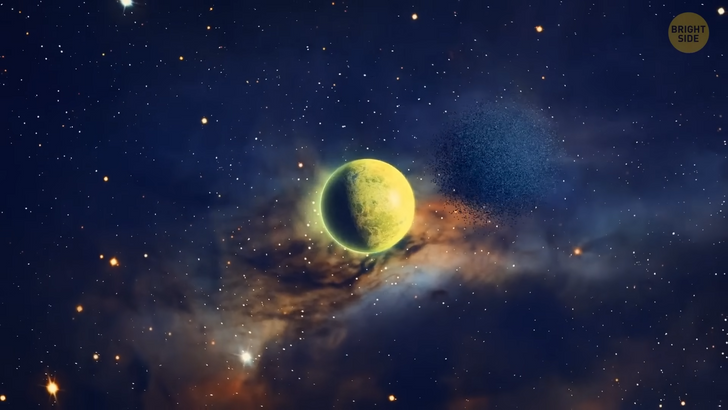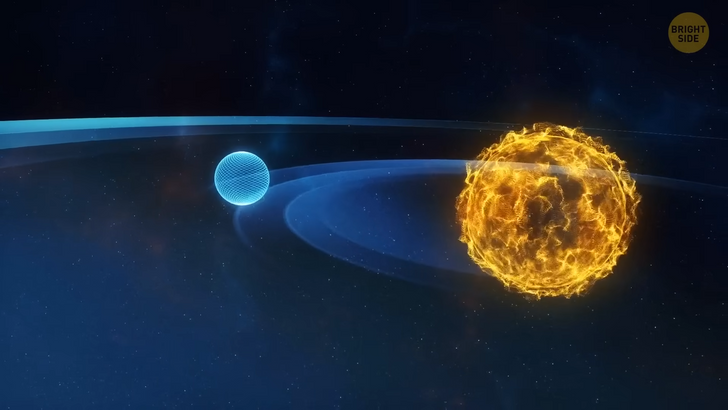12 People Whose Medical Visits Went Horribly, Horribly Wrong

When you look at photos taken from spaceships or the International Space Station that show sunlit objects like Earth or the Moon, something seems wrong. Space looks too empty! No magical scenery of a nighttime sky full of stars. It would be incredibly boring to go stargazing in space since the sky is always so dark. During the daytime, the sky on our home planet is blue because of the diffusion of light. It happens when sunlight goes through the atmosphere. But if you were on the Moon or somewhere else in space, there would be no atmosphere to spread this light around. That’s why the sky there would always appear black. But it doesn’t mean it’s less bright out there. If you were looking out of the window of the Space Station, you’d see just as much direct sunlight as you would gazing out of your apartment window during a cloudless day — maybe even more.

When taking a picture on a sunny day, you’ll probably use a short exposure, together with the narrow aperture setting on your camera. This way, just a short burst of light will get in. That’s similar to how our pupils contract in sunlight so that they don’t have to deal with too much light. And since it’s just as bright up there in space, the process is the same when you take pictures of sunlit objects there. Using short exposure, you can get good, bright pictures of Earth or the surface of the Moon. But it also means there will be no stars in the picture. Even up there, stars are relatively dim. They don’t emit enough light to show up in photos taken with such settings. On the bright side, stargazing in space would still be fun!
Our home planet has a blue sky that slowly transforms into a beautiful orange-red palette at dusk and dawn. But if you ever get a chance to watch a sunset on Mars, you should expect the opposite — an orange-brown daytime sky that gets a bluish tint at sunset. First of all, Mars is farther away from the Sun than our planet. So, when you’re looking at the Sun from the Martian surface, of course, it looks fainter and smaller. And not just that — the Sun observed from Mars is just a bluish-white dot surrounded by a blue halo. The thin atmosphere of the Red Planet contains large dust particles. They create an effect called “Mie [mí] scattering.” It occurs when the diameter of particles in the atmosphere is almost the same as the wavelength of the scattered light. This effect filters out the red light from the Sun’s rays. So, only the blue light would reach your eyes on Mars.

How come Earth doesn’t have rings? All gas giants in our Solar System — Jupiter, Saturn, Uranus, and Neptune — have such rings, whereas the rocky planets — Mercury, Venus, Earth, and Mars — don’t. There are two theories about how rings can appear around a planet. They might be just some material left from the times when the planet was forming. Or they may be the remains of a moon that got destroyed by a collision with some space body or torn apart by the strong gravitational pull of its parent planet.
The gas giants formed in the outer regions of our Solar System, while all the rocky planets are in the inner part. So, maybe the inner planets were more protected from potential collisions that could have formed their rings? There are also more moons in the outer regions of our Solar System, which could be another reason why the planets there have rings. Also, bigger planets have stronger gravity. It means they can keep their rings stable after they form. Some experts believe Earth used to have a ring system a long time ago. A Mars-sized object might have collided with our home planet, which probably created a dense ring of debris around it. Some scientists think that this debris formed not a ring but what we today know as the Moon.
There’s probably a giant planet lurking at the edge of the Solar System, far beyond Neptune. Scientists called this mysterious hypothetical world Planet Nine. If it does exist, it’s probably similar to Uranus or Neptune and 10 times more massive than our home planet. It’s likely to circle around the Sun, but in the outer reaches of the Solar System, about 20 times farther than Neptune. Another interesting theory says that Planet Nine could actually be a black hole the size of a grapefruit that warps space in a similar way a large planet would.

Even though we once thought it was a rare substance in space, water exists all over our Solar System. For example, you can often find it in asteroids and comets. It’s also in craters on the Moon and Mercury. We still don’t know if there’s enough water to support potential human colonies if we decide to move there. But some amount of water is definitely present there.
Mars has water at its poles, too. It’s mostly hidden in the layers of ice and probably under the planet’s dusty surface. Europa, Jupiter’s moon, has some water, too. This is the most likely candidate we know about to host life outside Earth. There’s probably a whole ocean of liquid water under its frozen surface. It might actually contain twice as much water as all of Earth’s oceans combined. Neptune is unexpectedly warm. Even though it’s 30 times as far from the Sun as our planet and receives less sunlight and heat. But it still radiates way more heat than it gets. It also has way more activity in its atmosphere than you’d suspect, especially if you compare it to its neighbor, Uranus. Both of these planets emit the same amount of heat, even though Uranus is much closer to the Sun. No one knows why. Neptune has extremely strong winds that can reach a speed of up to 1,500 mph. Can they produce this heat? Or maybe it’s because of the planet’s core or its gravitational force?

There’s a monster black hole hurtling through space at a speed of 5 million mph. Scientists located it with the Hubble Space Telescope. They believe it weighs as much as a billion Suns. It was supposed to stay put in the center of its home galaxy. But some gravitational forces are pushing it around. At one point, this black hole is going to break free from its galaxy and continue roaming the Universe. Luckily, it’s still 8 billion years away from us. Solar storms are so powerful they could leave us in complete darkness. Back in July 2012, the strongest solar storm in over 150 years narrowly missed Earth. Coronal mass ejections — or CMEs — are large bubbles of ionized gas. They tore through our orbit back then. If they had caught our planet in the crosshairs, we would have literally been in the firing line. We’d have faced solar matter hurtling toward Earth, damaging computers and causing power outages that would have lasted for months.
A surprise solar storm hit us on June 25, 2022. One photographer even managed to capture stunning bright auroras that flashed across the dawn sky in Calgary, Canada, and lasted for 5 minutes. They were caused by the storm. Vampire stars are a real thing! They’re part of a binary star, and they can literally drain the life out of the other star in the system. They do it to keep burning for a longer time. It works like this: a smaller star with a lower mass “steals” its sibling’s hydrogen fuel to increase its own mass. This vampire star then becomes hotter. Plus, its color changes to striking blue. This way, it looks much younger. How sneaky.

The color of the Universe is dubbed ’cosmic latte.’ The light coming from galaxies and stars within them, as well as clouds of gas and dust in the observable Universe, have a specific color. It’s an ivory tint pretty close to white. The Universe is beige because there are a bit more areas that produce green, yellow, and red light than those that emit blue.











